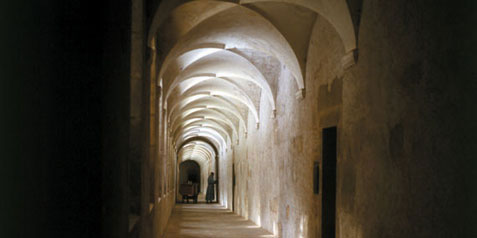This is from a larger passage where SK deals with the fact that SO much art (be it painting, poetry, music, etc.) are so full of very short-term passion. This could be the thrill of sex, the anguish of death at the moment of passing, the fury of the heat of battle, the sublime fleeting moment of beauty. It turns out, the very nature of art is that it is REALLY good at communicating short things like this. So that’s what it usually gets used for. LONG things though, are very difficult to get across. I love this passage:
If I imagine a hero who loses his life, this can be concentrated very well in the moment, but the daily dying cannot, because the point is that it goes on every day. Courage can be concentrated very well in the moment; patience cannot, precisely because patience contends against time. (etc.) The man married fifteen years – He has not fought with lions and ogres, but with the most dangerous enemy — with time.
-Either/Or, p.68
The wonder of love can be captured in music and poetry, but what about the patience love of fifteen years of marriage? Not so much. And yet the latter SHOULD probably be celebrated even more! It is a challenge, but a worthwhile one.

We recently watched the documentary Into Great Silence. It follows the life of some very quiet and ascetic Christian monks living high in the Alps. It’s three hours long and there is no narration and only a few minutes worth of talking. “You have seduced me, Oh Lord, and I was seduced” appears on the screen at slow regular intervals. On one hand, the film is terribly boring. On the other hand, I think is successfully communicates the long-suffering of the monks in a way nothing else could. As art, as a meditation, it is very successful. If you sitting there in our seat and starting to squirm (like I was!), then I think the point is being made.
My wife also commented that she has seen some wonderful black-and-white photography of elderly people that she thought successfully communicates the ideas of age and long-suffering. I had to agree.
Still, can you think of a pop song that successfully communicates the joy of fifteen years of marriage? I don’t think they even try! Country singers do sometimes.
I can think of lots of examples from classical music, nearly all of them soaked in short-term passion. Think of the oozing love of Wagner’s Tristan and Isolde. Or fate knocking on the door in Beethoven’s 5th symphony. Or the short lively dance of the bird-catcher in Mozart’s The Magic Flute. Or the gorgeous snow-flakes falling in the second movement of Vivalid’s Winter.
Where am I going with this? In a world full novels with 4-page chapters, 1-second cuts in movies, music videos, 3-minute pop songs, YouTube clips, the short and punchy art is more prevalent than ever. Now, that’s just great for short and punchy things. But many things about Christianity, many things about the way that Jesus Chris is redeeming creation, many things about the beauty and character of God, many of these things have a “slow” quality that needs a different medium and/or a skilled and keen artist.
An eschatological example: I think the story of the end-time “rapture” is mistaken, but its short punchy quality makes it easy to imagine, communicate and portray. The glorious long haul of post-millennialism does not lend itself to expression as a sound-bite.
The Christian does not deny the beauty of the young woman on MTV shakin’ her booty. But he prizes much more the beauty of a highly loved wife and mother watching her children grow up, get married, and build houses. The latter is more difficult to capture powerfully in art, because it “contends with time” as SK says.
If we are to tell the story of Jesus and his deep love for us and redemption, the gospel, then we are going to find ourselves telling a LONG story. We creative artists need more practice at doing this without making something boring as well.
